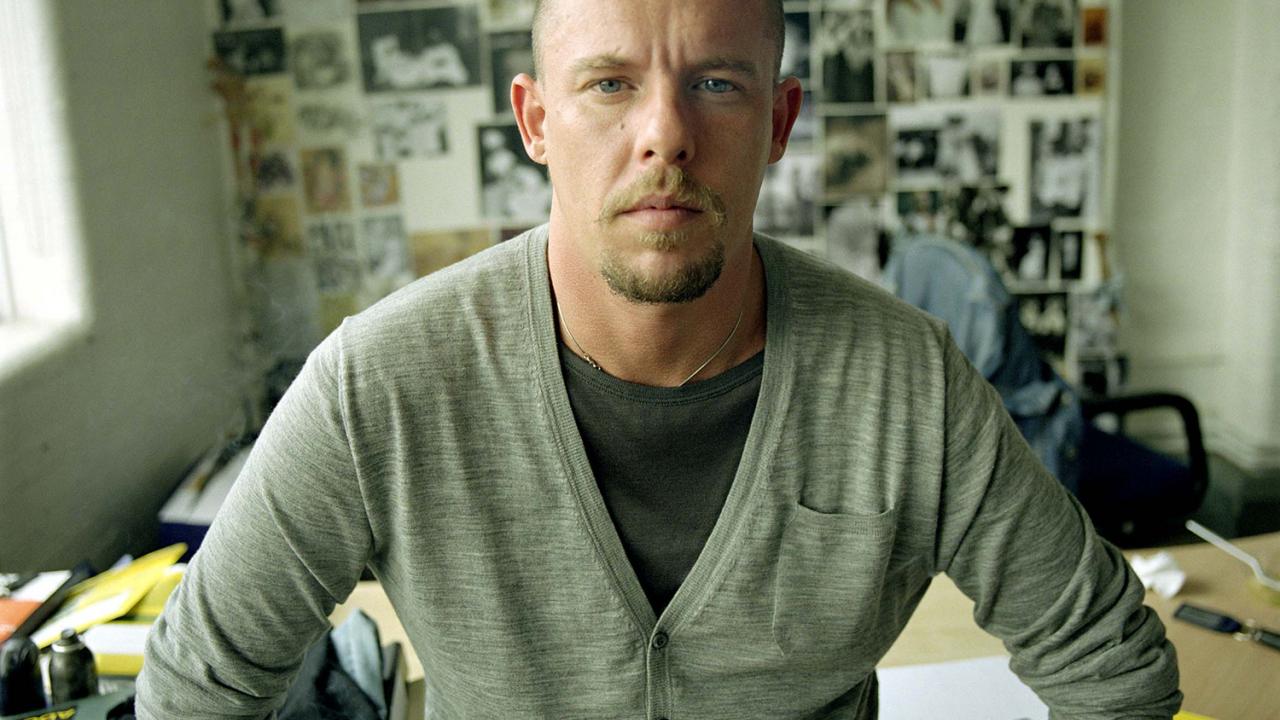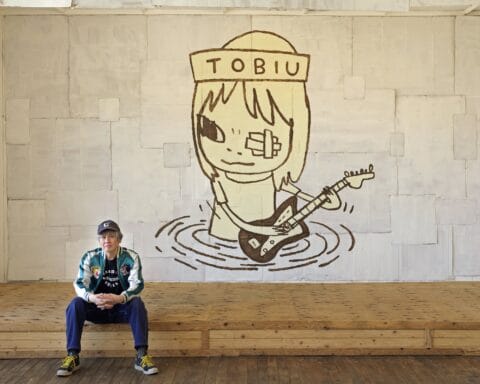Alexander McQueen was a creative genius who redefined fashion with a daring approach and revolutionary vision. Known for his provocative designs, theatrical runway shows, and ability to weave complex narratives through clothing, McQueen was not just a designer; he was a storyteller who used fashion to explore profound themes like life, death, beauty, and identity. His career remains an incredible story of transformation, from a working-class upbringing to a renowned name in global fashion. This article will delve into McQueen’s life, his unforgettable collections, and the legacy he left on the fashion world.
Early Life and Beginnings
Born Lee Alexander McQueen on March 17, 1969, in London’s East End, McQueen grew up in a large working-class family. His father was a cab driver, and his mother a teacher. Despite financial hardships, McQueen’s family nurtured his creative spirit, allowing him the freedom to explore his interests. From a young age, McQueen showed an affinity for drawing and an intense curiosity about clothing construction. He would often make dresses for his sisters, cutting up fabric scraps to bring his ideas to life.
McQueen left school at age 16 with limited formal education, but his determination to enter the fashion world was already firmly in place. He quickly secured an apprenticeship on Savile Row, where he worked for tailors like Anderson & Sheppard and Gieves & Hawkes, learning the trade’s core skills of precise tailoring, garment construction, and craftsmanship. Savile Row’s strict standards instilled in McQueen an appreciation for detail and construction that would become fundamental to his later work.

Education and Early Recognition
In 1989, after gaining practical experience, McQueen enrolled at Central Saint Martins College of Art and Design. He quickly developed a reputation as a fearless innovator, and his master’s degree collection in 1992, inspired by Jack the Ripper, showcased his unorthodox approach to design. Isabella Blow, a prominent British stylist and fashion editor, attended the show and was so captivated by McQueen’s work that she bought the entire collection. Blow became McQueen’s mentor and advocate, introducing him to influential figures in fashion and propelling him into the industry spotlight.
This collection marked McQueen as a designer with a distinct voice, blending historical references with a raw, almost gothic romanticism. His early work reflected both the refined techniques he’d learned on Savile Row and his love for dramatic, often disturbing themes, which became increasingly characteristic of his design style.
Career Highlights and Signature Collections
As McQueen’s career progressed, he continued to push the boundaries of fashion through provocative collections that challenged societal norms and redefined aesthetic beauty. Here are some of his most iconic collections:
1. “Highland Rape” (Autumn/Winter 1995)
The 1995 “Highland Rape” collection established McQueen as one of the most controversial designers of his generation. It was also a powerful expression of McQueen’s Scottish heritage, as it symbolized the historic British oppression of Scotland. The runway presentation featured models in torn, tattered clothing that appeared ravaged, many of them stumbling down the runway with looks of anguish on their faces. Although criticized by some as misogynistic, McQueen clarified that the show symbolized Scotland’s exploitation and the theme of survival through adversity. This collection cemented his reputation for combining high art with fashion, pushing audiences to engage emotionally with his work.

2. “Dante” (Autumn/Winter 1996)
Drawing inspiration from themes of war, religion, and humanity’s darker side, McQueen’s “Dante” collection was another defining moment. Named after the poet Dante Alighieri, this show was a haunting commentary on mortality and spirituality. Set against the backdrop of an abandoned church, the models appeared as gothic figures in elaborate garments featuring intricate embroidery and unconventional silhouettes. The show’s dark, religious overtones and intense use of symbols—like crucifixes—confronted the audience with questions about faith, violence, and beauty.
3. “The Widows of Culloden” (Autumn/Winter 2006)
This collection revisited McQueen’s Scottish heritage but with a more nostalgic, romantic approach. Inspired by the Battle of Culloden in 1746, the show honored Scotland’s defeated soldiers and the grieving women left behind. The collection featured elements of traditional Scottish attire, such as tartan, lace, and corsetry, but combined them with McQueen’s signature tailoring and dramatization. This show is also famous for its use of holographic technology, projecting an ethereal image of Kate Moss in a flowing gown. The ghostly projection captivated audiences and represented McQueen’s commitment to blending technology and fashion, creating an immersive experience that transcended a typical runway presentation.
4. “Voss” (Spring/Summer 2001)
Perhaps one of McQueen’s most psychologically intense collections, “Voss” was set in a mirrored asylum that forced the audience to confront their own reflections. This collection explored society’s obsession with beauty, vanity, and mental confinement. Models in this show displayed garments that were both romantic and grotesque, featuring intricate details like feathers, bandages, and cage-like headpieces. The show concluded with a glass box opening to reveal a model adorned in a mask of live moths, a dramatic symbol of transformation and decay. “Voss” remains one of McQueen’s most iconic shows, known for its intellectual depth and exploration of societal critique.

5. “Plato’s Atlantis” (Spring/Summer 2010)
“Plato’s Atlantis” was McQueen’s final complete collection before his death, and it epitomized his vision of the future of humanity. Drawing inspiration from oceanic life and the potential impacts of climate change, McQueen envisioned a world where humans evolved into aquatic creatures. The collection featured digitally printed dresses with aquatic patterns, reptilian textures, and the iconic “Armadillo” boots, which became a symbol of McQueen’s avant-garde aesthetic. “Plato’s Atlantis” also marked a milestone in fashion history as the first show to be live-streamed online, showcasing McQueen’s forward-thinking approach and embrace of technology.
Artistry and Aesthetic
McQueen’s aesthetic was marked by a fascination with the grotesque, the gothic, and the surreal. His designs were often complex, weaving together historical influences, literary references, and macabre elements. His collections showcased a meticulous attention to tailoring and structure, honed from his years on Savile Row, yet each piece also carried an emotional weight and visual complexity that set him apart.

McQueen’s work explored profound themes—beauty, death, identity, and societal issues. His romanticism often leaned toward the gothic, with recurring symbols of skulls, birds, and Victorian influences. This signature aesthetic blended darkness with beauty, creating a compelling narrative in each garment and show. McQueen once described himself as “the hooligan of English fashion,” a testament to his rebellious approach and refusal to conform to traditional standards of beauty and presentation.
Innovations and Contributions to Fashion
Alexander McQueen’s influence extended beyond aesthetics. He was also a pioneer in the use of technology and unconventional materials, forever transforming the fashion industry. McQueen was among the first designers to use digital printing techniques on fabrics, experimenting with prints that brought his artistic visions to life with unprecedented detail. Collections like “Plato’s Atlantis” demonstrated his willingness to push technological boundaries, blending digital design with handcraftsmanship.
He also embraced 3D printing, using the technology to create intricate and otherworldly accessories. McQueen’s incorporation of holograms, mirrors, and multimedia elements in his shows set a new standard for fashion presentations, transforming the runway into a fully immersive art form. His shows were less about selling clothing and more about creating a powerful narrative that lingered in the minds of viewers.
Legacy and Influence
Following McQueen’s untimely death in 2010, his influence has only grown. Sarah Burton, who worked closely with McQueen for over a decade, took over as the brand’s creative director, bringing her own vision while preserving McQueen’s aesthetic of dark romanticism. Under Burton’s leadership, the Alexander McQueen brand has continued to thrive, creating collections that honor McQueen’s legacy while embracing new forms of expression.
McQueen’s influence is evident across the fashion industry, inspiring both established designers and newcomers. His work is often studied for its bold narrative approach, technical mastery, and willingness to confront difficult themes. The Alexander McQueen exhibition “Savage Beauty,” held at the Metropolitan Museum of Art in 2011 and later at the Victoria and Albert Museum in London, drew record-breaking crowds and stands as a testament to his enduring impact on fashion and culture.

A Testament of Power and Creativity
Alexander McQueen’s career was a testament to the power of originality, storytelling, and emotion in fashion. He redefined what it meant to be a designer, turning each collection into a narrative experience that blurred the lines between fashion, art, and performance. McQueen’s work delved into themes that most designers shied away from, embracing the complex and unsettling aspects of the human experience. Through his fearless approach to beauty, he expanded the possibilities of fashion as an art form.

Today, McQueen’s legacy lives on in the creativity of designers who follow in his footsteps, inspired by his commitment to pushing boundaries and challenging conventions. His life and work remind us that fashion is more than just clothing—it is an expression of human emotion, a reflection of society, and, at its best, a celebration of the beautiful and the dark. Alexander McQueen’s influence on fashion is immortal, continuing to inspire and captivate audiences worldwide.






